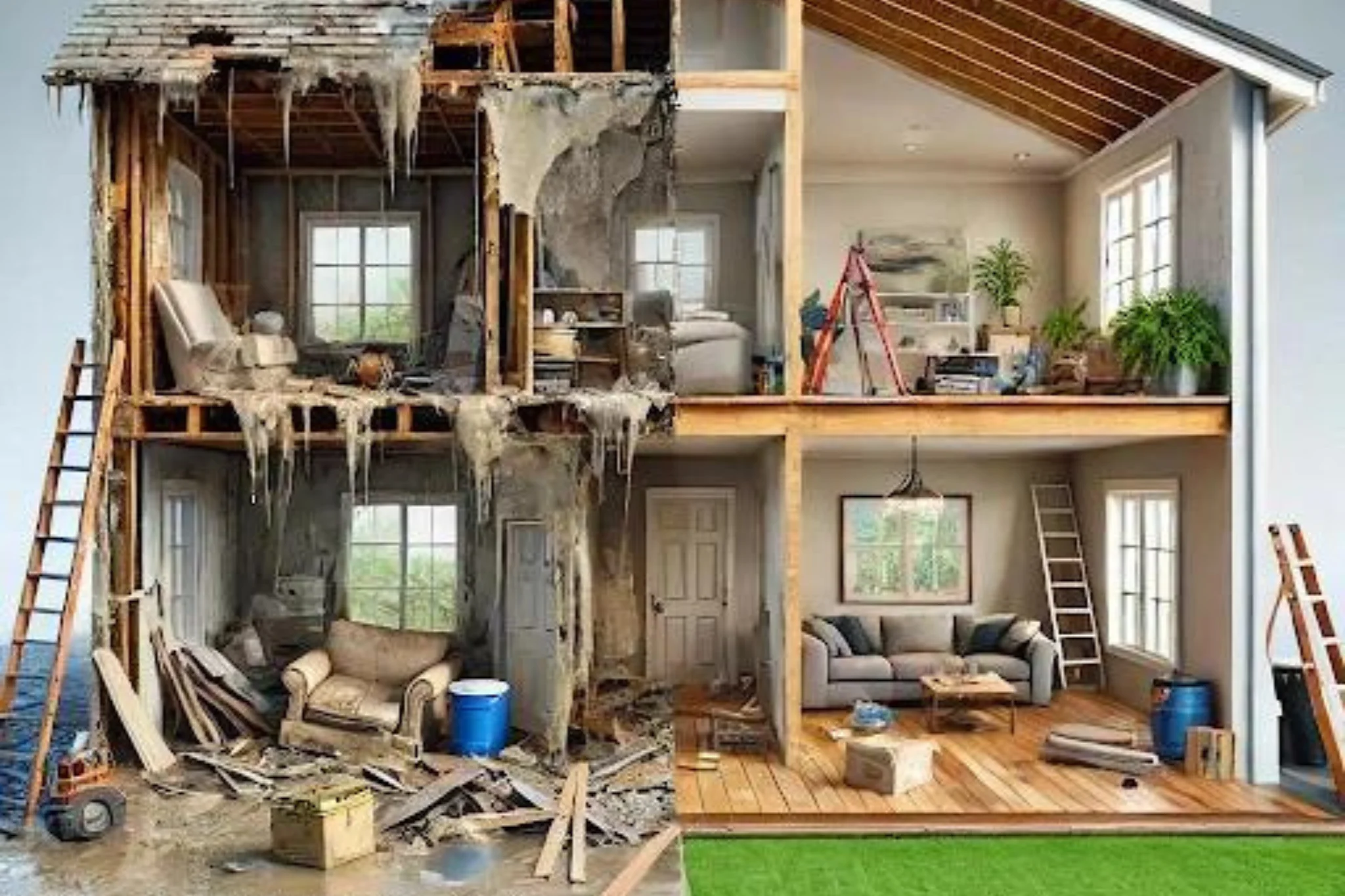Rebuilding your home or business after significant damage can be a complex and challenging process. Whether it’s due to water damage, fire, or another disaster, the rebuild phase requires careful planning and execution to avoid common pitfalls that can lead to delays, added costs, or subpar results. Here, we’ll explore some expert insights on how to avoid these pitfalls and ensure a successful rebuild.
1. Inadequate Planning and Budgeting
One of the most common pitfalls in the rebuild process is inadequate planning and budgeting. Without a clear plan, including a detailed scope of work and a realistic budget, you may encounter unexpected costs, delays, or changes that can derail the project.
Expert Tip:
- Begin with a comprehensive assessment of the damage and work with a professional to create a detailed rebuild plan. This plan should include timelines, materials, and labor costs.
- Ensure your budget includes a contingency fund for unforeseen issues, which are common in rebuilding projects.
Learn more about how Predator Restoration Inc can assist with Comprehensive Rebuild Planning.
2. Choosing the Wrong Materials
Selecting the wrong materials for your rebuild can lead to long-term issues such as poor durability, higher maintenance costs, or even future damage. It’s essential to choose materials that are suited to your environment and specific rebuild needs.
Expert Tip:
- Consult with your contractor about the best materials for your project, considering factors like climate, wear and tear, and sustainability.
- Opt for high-quality, durable materials that offer longevity and require minimal maintenance.
Our team at Predator Restoration Inc specializes in using High-Quality Materials tailored to your rebuild needs.
3. Neglecting Building Codes and Permits
Ignoring local building codes and failing to obtain the necessary permits can result in significant delays, fines, and even the need to redo work that doesn’t comply with regulations.
Expert Tip:
- Always check local building codes and regulations before starting any rebuild project. Work with professionals who are familiar with these requirements and can obtain the necessary permits on your behalf.
- Regular inspections during the rebuild process ensure that all work meets legal and safety standards.
At Predator Restoration Inc, we handle all Permit and Code Compliance to ensure your rebuild meets local regulations.
4. Overlooking Energy Efficiency
In the rush to rebuild, many homeowners overlook opportunities to improve energy efficiency. Incorporating energy-efficient materials and systems during the rebuild can save money on utilities and increase the value of your property.
Expert Tip:
- Consider incorporating energy-efficient windows, insulation, and HVAC systems into your rebuild.
- Explore options for sustainable building materials that reduce energy consumption and enhance comfort.
Our experts can guide you on Energy-Efficient Rebuilds that lower costs and improve sustainability.
5. Lack of Communication with Contractors
Poor communication between homeowners and contractors is a leading cause of misunderstandings, delays, and dissatisfaction with the final result. Clear and consistent communication is key to a successful rebuild.
Expert Tip:
- Establish regular check-ins with your contractor to discuss progress, address concerns, and make decisions collaboratively.
- Use written agreements to document any changes to the original plan, ensuring that both parties are on the same page.
Our team at Predator Restoration Inc prioritizes Clear Communication throughout the rebuild process to ensure your vision is realized.
6. Rushing the Process
Rebuilding is a significant undertaking that requires time and attention to detail. Rushing the process can lead to mistakes, poor workmanship, and ultimately, a substandard result.
Expert Tip:
- Be patient and allow enough time for each phase of the rebuild to be completed correctly.
- Trust your contractor’s timeline, understanding that quality work takes time.
At Predator Restoration Inc, we focus on Quality-Driven Rebuilds, ensuring that each step is completed with care and precision.
Conclusion
Avoiding common pitfalls in the rebuild process requires careful planning, the right materials, adherence to regulations, and open communication. By following these expert tips, you can ensure that your rebuild is successful and that your property is restored to its full potential.
For more information on our rebuild services and how we can help you avoid these pitfalls, visit our Construction Rebuild Services page.

